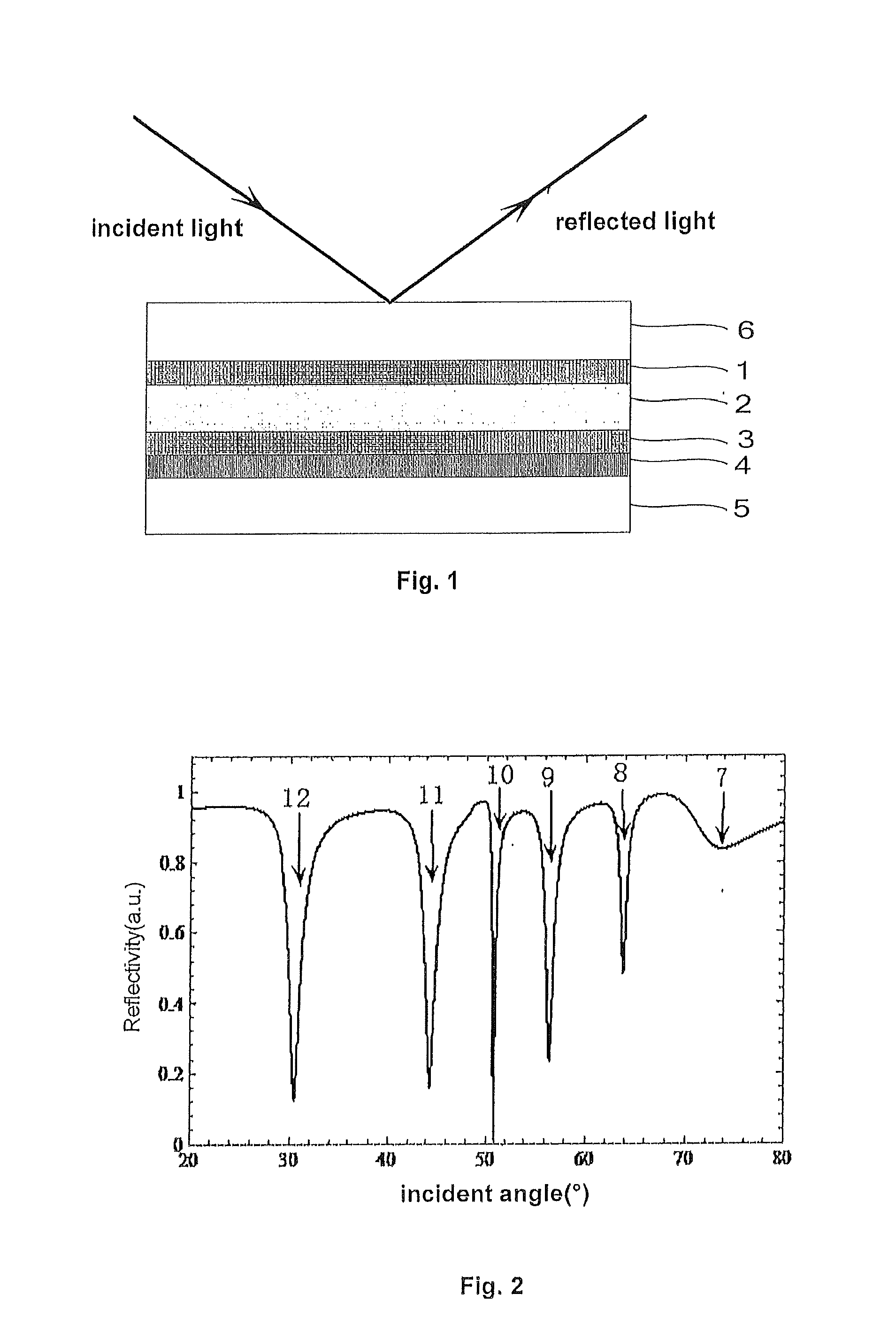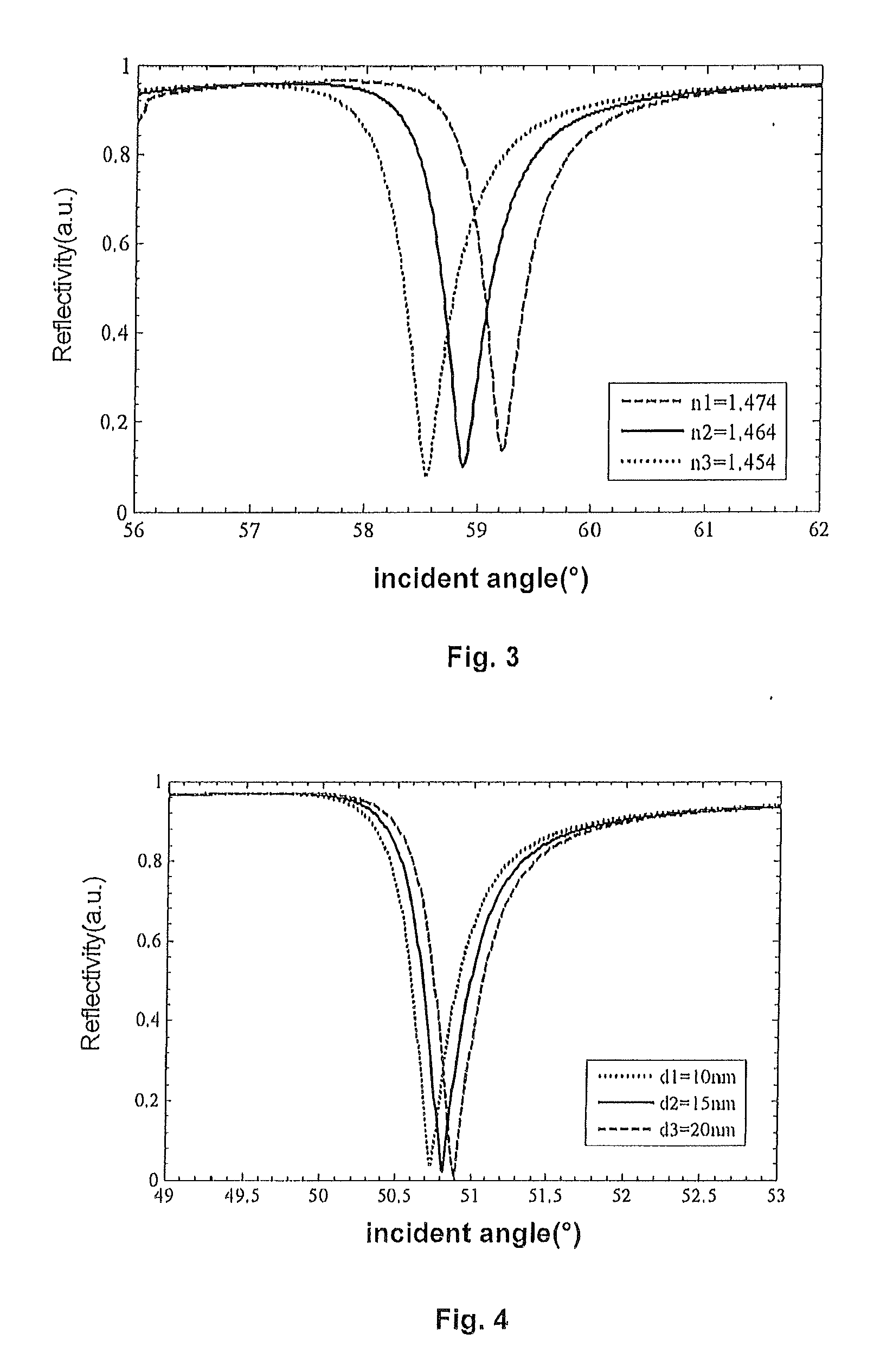Wave-guide coupling spr sensor chip and sensor chip array thereof
a sensor chip and waveguide technology, applied in the field of surface plasmon resonance (spr) detection methods, can solve the problems of low sensitivity of methods, difficult to actually apply lrspr to complex detection environments, and can only be excited, so as to achieve effective tuning, high interrogation precision, and tunable optical properties
- Summary
- Abstract
- Description
- Claims
- Application Information
AI Technical Summary
Benefits of technology
Problems solved by technology
Method used
Image
Examples
Embodiment Construction
[0082]According to the invention, information on a detected sample is obtained by changing parameters of optical properties of the dielectric waveguide layer, using the WCSPR structure as the basic structure of sensing measurement. Thus, it is possible to implement SPR sensors with high resolution, SNR, and to improve response time and to realize large-scale multi-channel scanning.
[0083]The WCSPR structure illustrated in FIG. 1 comprises a multilayer film structure. The SPR excited at the interface between the metal layer 3 and the detected layer 4 is affected by the waveguide modal property of the dielectric waveguide layer 2. Since the SPR can only be excited by a TM mode of the incident light, the reflection of the TM mode at the interface between the dielectric waveguide layer 2 and the metal layer 3 may be expressed as:
ri,k=kzlɛk-kzkɛlkzlɛk+kzkɛl(3)
[0084]where ri,k is the reflectivity of the light wave at the interface between the ith and kth layers, i,k=0, 1, 2 . . . , kzi=k0√...
PUM
 Login to View More
Login to View More Abstract
Description
Claims
Application Information
 Login to View More
Login to View More - R&D
- Intellectual Property
- Life Sciences
- Materials
- Tech Scout
- Unparalleled Data Quality
- Higher Quality Content
- 60% Fewer Hallucinations
Browse by: Latest US Patents, China's latest patents, Technical Efficacy Thesaurus, Application Domain, Technology Topic, Popular Technical Reports.
© 2025 PatSnap. All rights reserved.Legal|Privacy policy|Modern Slavery Act Transparency Statement|Sitemap|About US| Contact US: help@patsnap.com



